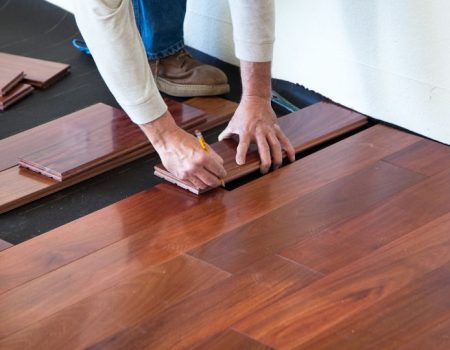A Complete Guide to Tiling Like a Pro
Tiling is a dynamic home improvement project with the power to dramatically enhance any space. From updating a kitchen backsplash to installing a new floor or adding a stylish tile border to a bathroom, mastering tiling techniques ensures a professional, polished result. This guide is designed to help you navigate the intricacies of tiling, offering detailed advice on techniques and tips tailored for different areas of your home. We’ll cover everything from surface preparation to tile installation and grout application, ensuring you’re equipped to tackle common challenges and achieve a beautifully finished space that adds both elegance and functionality to your home.
Understanding the basics of tiling is essential for achieving a professional and durable finish. Tiling involves applying tiles to a surface using adhesive and grout. The key components include the tiles themselves, which come in various materials such as ceramic, porcelain, and natural stone, each suited for different applications. Adhesive, typically thin-set mortar or epoxy, is used to bond the tiles to the surface, while grout fills the gaps between them, providing stability and a finished look.
Before starting your tiling project, ensure the surface is clean, dry, and level. Proper surface preparation and the correct choice of materials are crucial for a successful tiling job. Familiarizing yourself with these basics will help you lay a strong foundation for a visually appealing and long-lasting tile installation.
Mastering tiling for any area involves understanding key techniques and careful preparation. Begin by selecting the right tiles and adhesive for your project, ensuring they are suitable for the specific environment, whether it’s a high-moisture bathroom or a high-traffic floor. Proper surface preparation is crucial—make sure the surface is clean, dry, and level before starting. Use a notched trowel to apply adhesive evenly and lay tiles from the center of the room outward for a balanced appearance.
After installing the tiles, grout lines carefully to fill gaps and create a seamless finish. Regularly clean excess grout to avoid haze and ensure a professional look. By following these steps and addressing common issues promptly, you can achieve a durable and attractive tiling job in any space.
Proper preparation is the key to a successful tiling project. Here’s a step-by-step approach to get your space ready:

Mastering essential tiling techniques is key to achieving a flawless finish in any tiling project. Start by ensuring proper tile cutting and fitting; use a tile cutter for straight cuts and a wet tile saw for intricate shapes. For irregular cuts, tile nippers are useful. Accurate measurements and careful cuts are crucial to avoid gaps and ensure a seamless look.
When applying adhesive, use a notched trowel to spread it evenly, and work in small sections to prevent it from drying out. Lay the tiles starting from the center or focal point of the space to ensure an even pattern. Proper application of grout involves filling gaps thoroughly and cleaning excess grout promptly to prevent haze. These techniques will help you achieve a clean, professional finish.
Tiling in different spaces requires tailored approaches to ensure both functionality and aesthetics. In kitchens, backsplashes are a popular choice for adding a splash of color and protecting walls from spills. Here, durable materials like ceramic or glass tiles work well, and simple patterns often complement the space without overwhelming it. Proper sealing of grout lines is essential to prevent moisture damage.
In bathrooms, selecting water-resistant tiles like porcelain or natural stone is crucial due to high humidity and water exposure. For floors, choose textured tiles to prevent slipping. Ensure proper waterproofing before installation to avoid future issues. Each space has unique requirements, so understanding these specifics will help you achieve optimal results and durability.
Troubleshooting common tiling issues can save you time and prevent costly repairs. Uneven tiles are often caused by inconsistencies in the adhesive or subfloor. To address this, check the level of the subfloor and adjust the adhesive application technique. Using a leveling compound can help correct any surface discrepancies before tiling begins.
Grout haze, a common problem where excess grout dries on the tile surface, can be cleaned with a grout haze remover or a mixture of vinegar and water. If tiles become loose, it typically indicates insufficient adhesive or improper installation. Remove the loose tiles, clean the area, and reapply adhesive to ensure a secure bond. Addressing these issues promptly ensures a smooth and durable tiling job.
Achieving flawless tiling results at home starts with meticulous preparation and precise execution. Begin by selecting high-quality tiles and adhesive suitable for your specific project, whether it’s a kitchen backsplash or a bathroom floor. Ensure the surface is thoroughly cleaned, leveled, and prepped to avoid any imperfections. Accurate measurements and layout planning are crucial to ensure that the tiles fit perfectly and that cuts are minimal.
During installation, use a notched trowel to apply adhesive evenly and place each tile with care, ensuring consistent spacing with tile spacers. After the adhesive has cured, apply grout to fill in the gaps between tiles, and wipe away any excess promptly to avoid haze. By following these steps and paying attention to detail, you’ll achieve a professional, polished look that enhances the beauty and functionality of your space.
In conclusion, mastering tiling techniques can dramatically enhance the aesthetics and functionality of any space in your home. From kitchen backsplashes to bathroom floors, applying the right methods ensures a professional finish and long-lasting results. Understanding the basics, preparing surfaces meticulously, and employing effective installation and grouting techniques can lead to a flawless tiling job that elevates a home’s design.
For those seeking a seamless tiling experience, EGL Construction Inc in Glenview offers expertise in tiling and a commitment to quality craftsmanship. With a focus on precision and excellence, EGL Construction Inc ensures that every tiling project meets the highest standards. Contact them today to bring your vision to life with expert tiling solutions.

EGL Construction Inc delivers quality craftsmanship, specializing in residential and commercial projects, ensuring client satisfaction.
© 2024 EGL Construction Inc . All Rights Reserved. | Privacy policy | Terms and conditions